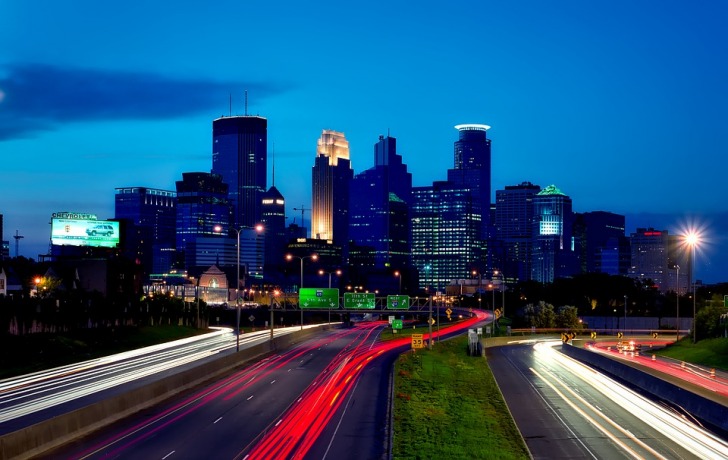Minnesota is a state in the Midwestern region of the United States.
This famous state is well known for its natural and cultural beauty.
Minnesota contains more than 11.000 lakes.
Moreover, Lake Itasca is the Mississippi River’s primary source.
Also, in this state, you can find good schools, excellent housing, and low unemployment.
Equally important is that in Minnesota, you always have anything to do.
It is a mix of waterways, hiking trails, and cultural attractions like art museums, historic sites, and heritage festivals.
But, then again, here is the most important question when talking about this state – how much is the cost of living?
Or, which are the top five most expensive for living here?
For that purpose, in the text below, we will review the basic-needs cost of living for individuals and families.
The analysis considers living costs in four categories: housing, food, health care, transportation, and other necessities.
Contents
Is it Expensive to Live in Minnesota?
Do not worry – living here is not so expensive.
Even more, living in Minnesota is less expensive than it is on average across America.
It means that goods and services in this state cost 2.0% less than they do on average nationwide.
Compared with all other states, this Cloudy Water State has the 20th highest overall cost of living.
However, the cost of living varies from city to city.
We will take a closer look at the most expensive cities later.
For now, we will have a detailed look at the housing costs for monthly basics and the costs of transportation and healthcare in this state.
Housing Costs
Regularly, housing costs are the main element in people’s financial budgets.
In Minnesota, the typical home is worth $215.000, or around $7.200 more than the national median home.
With this in mind, we can note that housing costs are not so costly.
As for renting, the monthly price for renting a one-bedroom in the state is $815.
If you prefer renting a unit with five or more bedrooms – in this state, it will cost you around $1.400.
Anyways, the typical renter in Minnesota spends $950 a month on housing, which is pretty cheap than the national average monthly rent.
Transportation Costs
Transportation can also be a significant component of the cost of living.
In this state, 87% of commuters drive to work, which is a sign that the average cost of gas is not so expensive.
In fact, the regular gas price is an average of $2.10 a gallon.
On the other side, other transportation costs, like car insurance premiums, are also less than the national average – it costs around $1.300.
Health Care Costs
Healthcare costs are usually the most needed thing when talking about any state and its cost of living.
Unfortunately, in Minnesota – it is on the opposing side.
Average health care costs for a single adult in the state total $4,900 per year, compared to the national average of $4,200.
Food Costs
Just like the housing costs and food costs are affordable in this state.
For context, a single adult spends an average of $3,300 on food annually, and a family of four spends $9,500 on average.
Compared with other states, the prices are so reasonable.
Here is a detailed list of the most vital things in our everyday costs.
The average price of one gallon of milk is $2.00, a dozen eggs- just $1.30 and a frozen meal – $3.00.
The Top Five Expensive Cities in This State
Minneapolis
Have we said that Minnesota is home to the Twin Cities – Saint Paul and Minneapolis?
Moreover, Minneapolis and Saint Paul border each other.
That can be very complex for people who aren’t locals, and they usually mix these two cities.
In fact, Minnesota is the most populous city and is known for its high-rise office buildings and vibrant nightlife.
Minneapolis is known for always being welcoming to new visitors.
But this city is also known as the most expensive city in Minnesota.
The average home value is $270.600.
That is a pretty unreasonable price for this state.
However, one of the most costly things here is food costs.
If you are a food lover, you better be prepared to pay for those overpriced bills.
Dinning in a restaurant for two could cost you around $65, while lunch for one is more than $20.
Saint Paul
As a state’s capital city, Saint Paul has a historic feel focusing on classic design, neighborhoods, and traditions.
While Minneapolis is the younger and busier city, Saint Paul is more green, quiet, and calm.
But what about the cost of living in this capital city?
Well, like any other capital city, Saint Paul’s cost of living is 6% higher than the national average.
The median home price is incredible $360.000, while the average renting cost for a one-bedroom apartment is $1.400 per month.
It means that Saint Paul’s housing expenses are 8% higher than the national average.
But, on the other side, transportation expenses are lower than the national average.
The gas price for one gallon is less than $2.50.
Rochester
Rochester, a city in the southern region of Minnesota, is known for the world-renowned Mayo Clinic.
Speaking of that – healthcare is the most expensive cost in this city.
Therefore, for a one doctor’s visit, you could pay around $130, while a one dentist appointment is $115.
Besides, Rochester is also famous for charming shopping districts, but the prices for clothes are so costly.
In this city, lunch for one person in a cheap restaurant is about $20.
Last but not least is free time activities, which this city has plenty of.
A cinema ticket for one person is $11, while the gym membership per month is enormous $55.
Bloomington
Bloomington is a suburban city located in Minneapolis Hennepin County on the north bank of the Minnesota River, above its confluence with the Mississippi River.
Bloomington is the fourth largest city in the United State of Minnesota.
This city is home to the young person scene.
It is so liberal with a busy nightlife, beautiful art, and a music scene.
In the meantime, it is the most expensive one too.
For example, housing expenses are 3% higher than the national average and, utility prices are 2% higher than the national average.
Transportation expenses like bus fares and gas prices are almost 10% higher than the national average.
A meal for one person in an inexpensive restaurant is from $18 to $22.
On the other side, a meal for two people in a mid-range restaurant is $70.
Duluth
In Duluth, there are plenty of things to do.
From shopping malls to theatres and museums – this city has it all.
But all of that is so costly.
The other prices like housing, food, and healthcare are pretty the same as in previously mentioned cities.
Minnesota Safety Overview
READ THE FULL REPORT: Minnesota Safety Review
Safety Index:
- OVERALL RISK: MEDIUM
- TRANSPORT & TAXIS RISK: LOW
- PICKPOCKETS RISK: LOW
- NATURAL DISASTERS RISK: LOW
- MUGGING RISK: MEDIUM
- TERRORISM RISK: LOW
- SCAMS RISK: LOW
- WOMEN TRAVELERS RISK: LOW












However, the transportation costs are the most expensive in Duluth.
A one-way ticket for local transport is $1.75, while a monthly pass is $50.
Overall, Minnesota is a beautiful state with a lot to offer, but living in the top cities can be quite expensive.
As a resident of Minnesota, I can say that while the cost of living may be higher in certain cities, the quality of life and access to various activities and amenities makes it worth it.
The gas price is around $2.20 per gallon and monthly bus passes for public transport cost only $35.